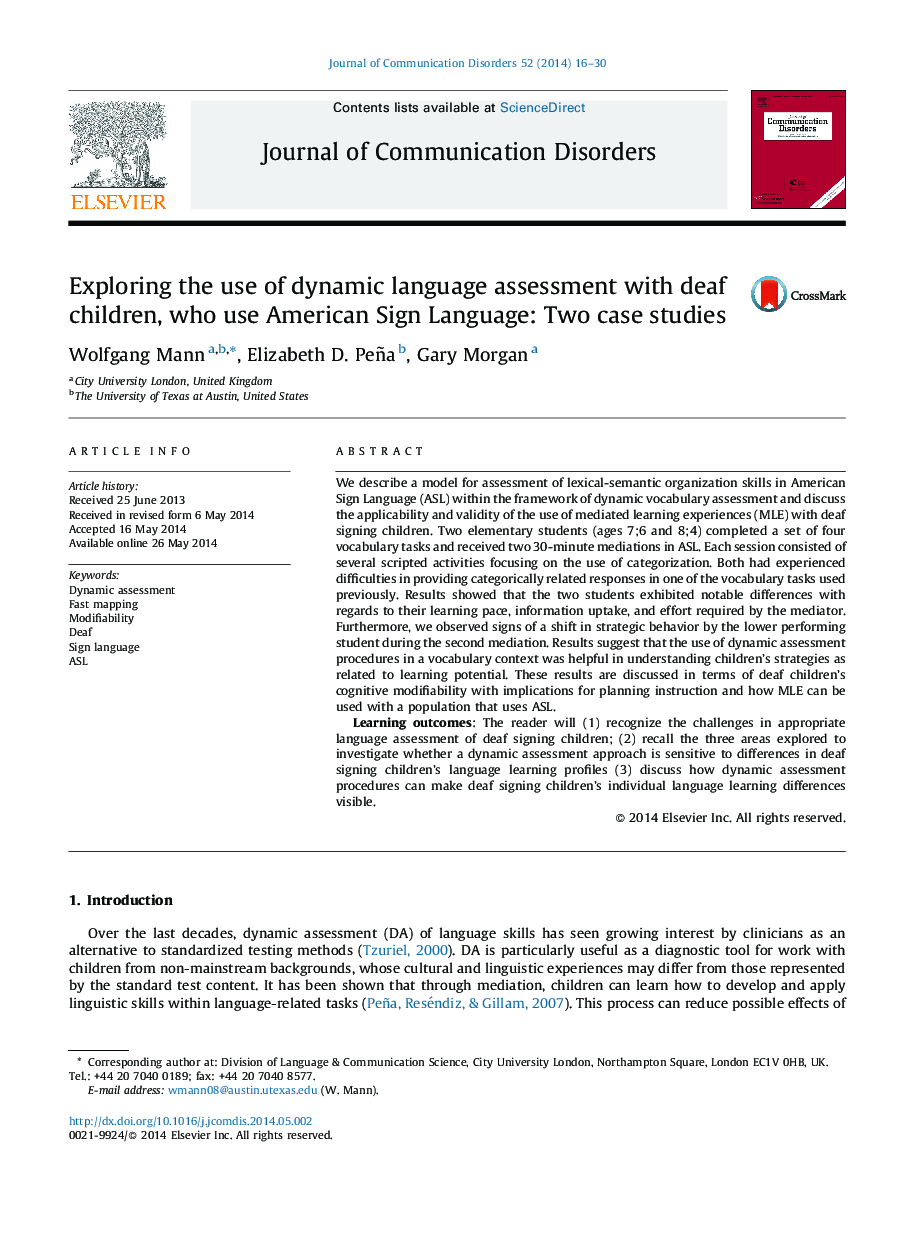| Article ID | Journal | Published Year | Pages | File Type |
|---|---|---|---|---|
| 910795 | Journal of Communication Disorders | 2014 | 15 Pages |
•We explored the potential of using dynamic language assessment with signing deaf children.•Dynamic assessment can identify language learning potential in deaf signers.•Close examination of deaf children's learning behaviors informs judgments of intervention need.•Results can provide insights about specific behaviors in deaf children with language impairment.
We describe a model for assessment of lexical-semantic organization skills in American Sign Language (ASL) within the framework of dynamic vocabulary assessment and discuss the applicability and validity of the use of mediated learning experiences (MLE) with deaf signing children. Two elementary students (ages 7;6 and 8;4) completed a set of four vocabulary tasks and received two 30-minute mediations in ASL. Each session consisted of several scripted activities focusing on the use of categorization. Both had experienced difficulties in providing categorically related responses in one of the vocabulary tasks used previously. Results showed that the two students exhibited notable differences with regards to their learning pace, information uptake, and effort required by the mediator. Furthermore, we observed signs of a shift in strategic behavior by the lower performing student during the second mediation. Results suggest that the use of dynamic assessment procedures in a vocabulary context was helpful in understanding children's strategies as related to learning potential. These results are discussed in terms of deaf children's cognitive modifiability with implications for planning instruction and how MLE can be used with a population that uses ASL.Learning outcomes: The reader will (1) recognize the challenges in appropriate language assessment of deaf signing children; (2) recall the three areas explored to investigate whether a dynamic assessment approach is sensitive to differences in deaf signing children's language learning profiles (3) discuss how dynamic assessment procedures can make deaf signing children's individual language learning differences visible.
